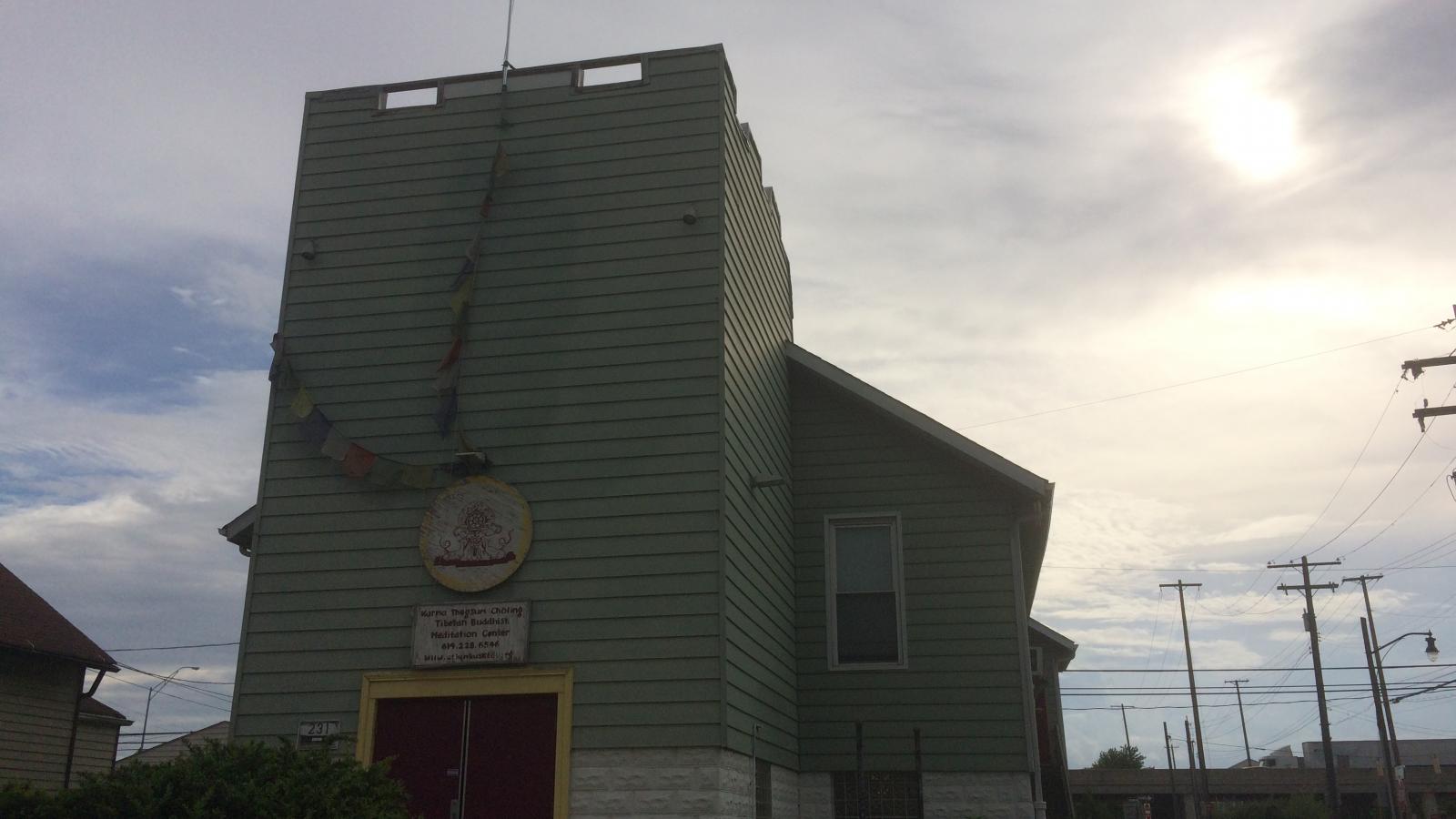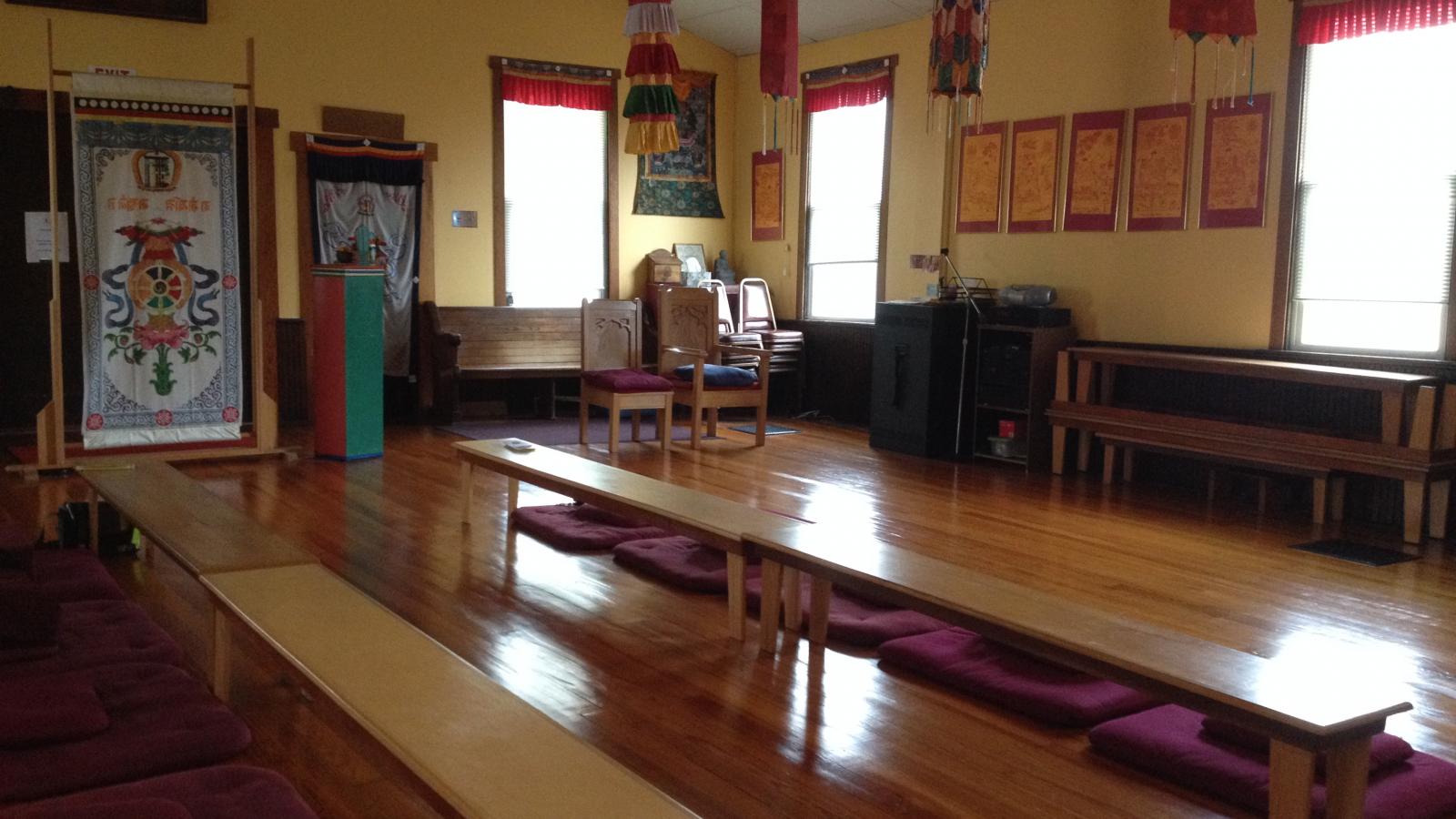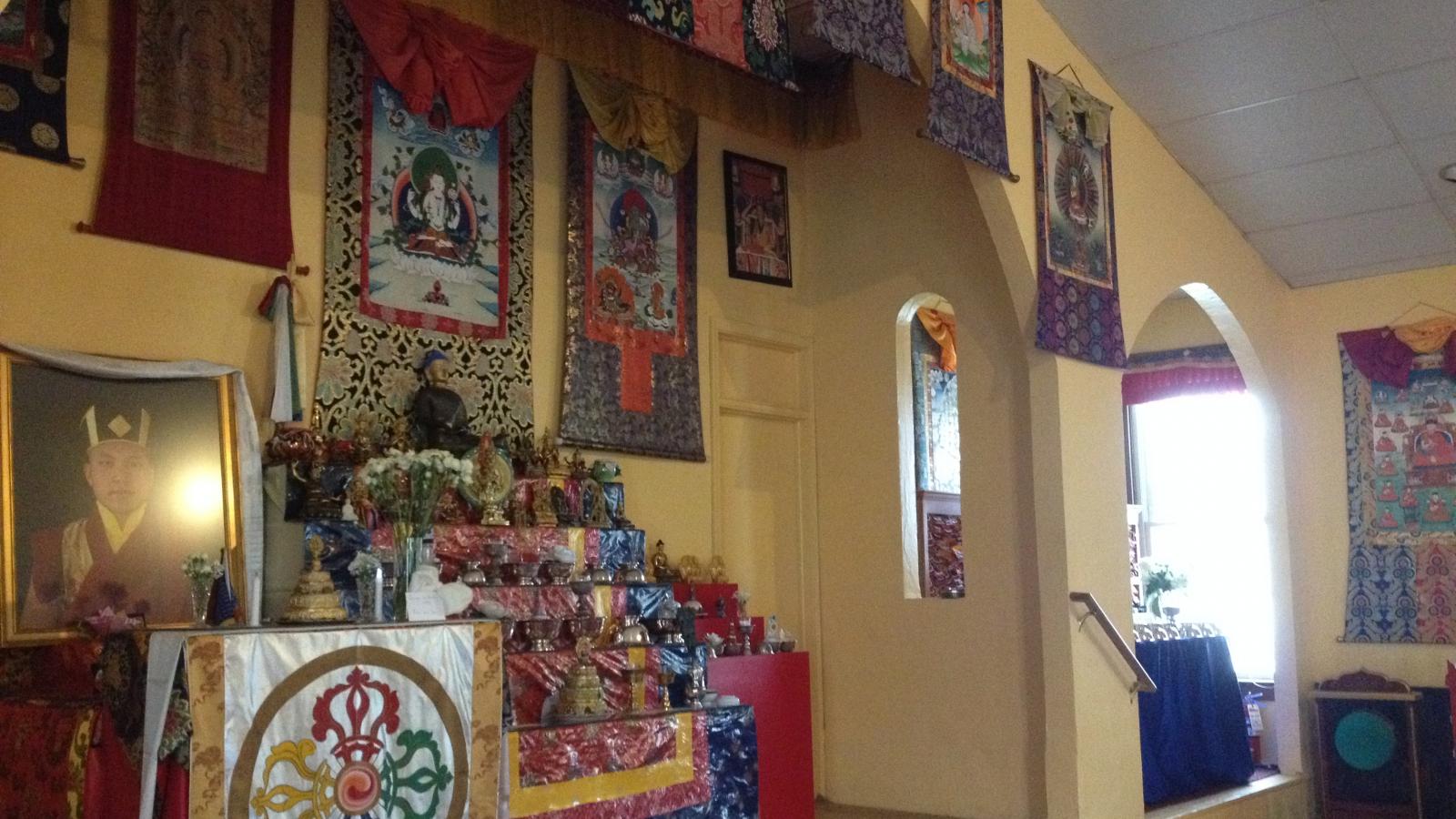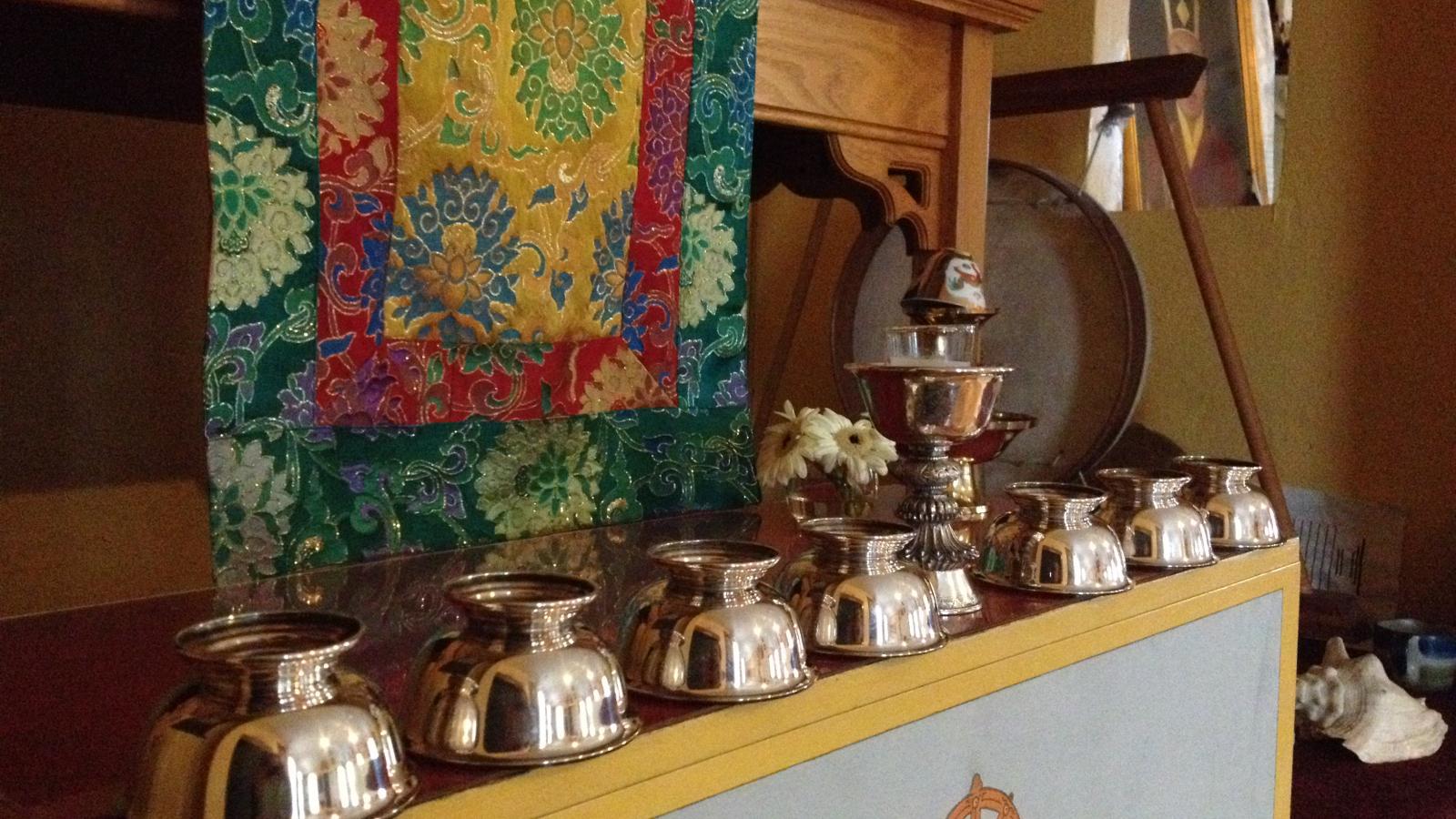“Let’s say you have two tuning forks tuned to the note A. So if you strike one, and then you merely hold it next to the other one…the other tuning fork will vibrate, will resonate…. So what I like to tell people is that practices like Chenrezig, practices like mantra, are resonant in much the same way. We have Buddha-nature, we have the potential for love and compassion that is immeasurable, but sometimes we need to apply an outer agent if you will, to remind us of that. …when you hear the sound ‘Om Mani Padme Hum’ it resonates with that which is Buddha within you.” --Lama Kathy Wesley
Driving down Grubb Street in Franklinton, one passes houses, the occasional vacant lot, and a small former church now decorated with prayer flags: the Columbus Karma Thegsum Chöling Center, or Columbus KTC. Inside, a dim stairwell lined with shoe racks gives way to a warmly lit, open space with low tables and cushions arranged in facing lines on the floor. The walls are hung with bright Tibetan Buddhist tapestries and art. A large shrine occupies the front of the room. On Tuesday nights, members and visitors gather at the tables, sitting on the floor to take part in a classical Tibetan chanted meditation dedicated to the Bodhisattva of Compassion: the Chenrezig Sadhana. The soft bell-like tone of a Tibetan singing bowl calls everyone to begin, with new attendees learning the melodies by listening, and then joining in. The following recording includes samples of several different chants heard during a recent practice.
“Going back to our history, the sixteenth Karmapa, who was the first of the Karma Kagyu to come to bring Buddhism to the United States…he made the observation that the practice of the Compassionate Bodhisattva would be good for America. […] He and many of the other Karma Kagyu teachers who came to the United States in the 1970s gave the practice of Chenrezig, the Bodhisattva of Compassion, as the main chant practice of our centers.” --Lama Kathy Wesley
The Chenrezig Sadhana, as performed among the community at Columbus KTC, is particularly representative of the way that this branch of Tibetan Buddhism—the Karma Kagyu lineage—is practiced in the United States. While “most of [the practices are] very accessible and people can do [them] at home,” as congregant and prayer leader Tanya told us, the group chanted meditations have a special place. Resident teacher Lama Kathy Wesley notes that some people “relate more to sound and mantra and chanting and singing than they do to quiet meditation.” The Tuesday night meditations provide an accessible practice for regulars and visitors alike, and complement other meditations, dharma talks, and educational programs for newcomers to Buddhism that are held on Sunday. In the clip below, you can hear samples of several of the Sunday events, many of which are designed especially to educate visitors.
Columbus KTC is very open to visitors, with guests making up a significant number of attendees at many events. The people of the KTC represent a variety of personal practices knitted together by the shared practices and teachings of the community. Teachers and attendees articulate their reasons for coming and their beliefs very differently, making it difficult to give a simple answer to “what is Columbus KTC, and what do they believe?” Perhaps that is the point; the center embraces avowed Buddhists and explorers alike, emphasizing education and welcoming people from across the Columbus area into their community. As regular member Craig told us, the KTC community loves visitors, providing a no-pressure opportunity for newcomers to expand their religious horizons. The practices of the KTC likewise encompass periods of guided sound—chants, teachings, and discussions—and intentional silence, reminding us that the religious soundscape includes both a variety of types of sounds and absences of sound too.
More information about the KTC is available at their website, http://www.columbusktc.org.
With special thanks to the Columbus KTC, Lama Kathy Wesley, and KTC leaders Tanya and Craig.
Field Researchers:
Garrett Brown
Jasmine Davis
Matthias Heinz
Caroline Toy








